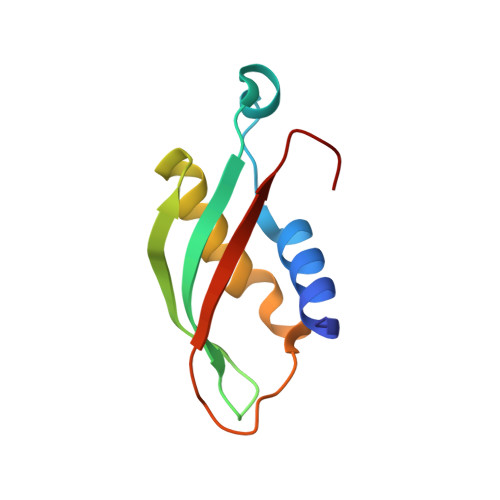Salt-inducible Protein Splicing in cis and trans by Inteins from Extremely Halophilic Archaea as a Novel Protein-Engineering Tool.
Ciragan, A., Aranko, A.S., Tascon, I., Iwai, H.(2016) J Mol Biol 428: 4573-4588
- PubMed: 27720988
- DOI: https://doi.org/10.1016/j.jmb.2016.10.006
- Primary Citation of Related Structures:
5LW8 - PubMed Abstract:
Intervening protein sequences (inteins) from extremely halophilic haloarchaea can be inactive under low salinity but could be activated by increasing the salt content to a specific concentration for each intein. The halo-obligatory inteins confer high solubility under both low and high salinity conditions. We showed the broad utility of salt-dependent protein splicing in cis and trans by demonstrating backbone cyclization, self-cleavage for purification, and scarless protein ligation for segmental isotopic labeling. Artificially split MCM2 intein derived from Halorhabdus utahensis remained highly soluble and was capable of protein trans-splicing with excellent ligation kinetics by reassembly under high salinity conditions. Importantly, the MCM2 intein has the active site residue of Ser at the +1 position, which remains in the ligated product, instead of Cys as found in many other efficient split inteins. Since Ser is more abundant than Cys in proteins, the novel split intein could widen the applications of segmental labeling in protein NMR spectroscopy and traceless protein ligation by exploiting a Ser residue in the native sequences as the +1 position of the MCM2 intein. The split halo-obligatory intein was successfully used to demonstrate the utility in NMR investigation of intact proteins by producing segmentally isotope-labeled intact TonB protein from Helicobacter pylori.
Organizational Affiliation:
Research Program in Structural Biology and Biophysics, Institute of Biotechnology, University of Helsinki, P.O. Box 65, Helsinki, FI-00014, Finland.














